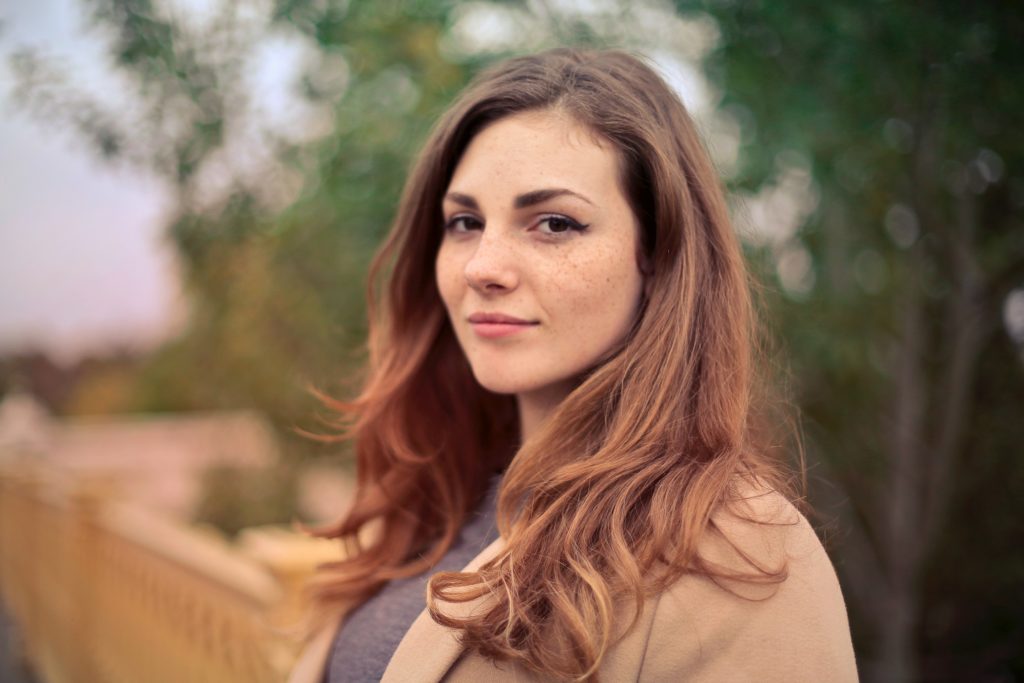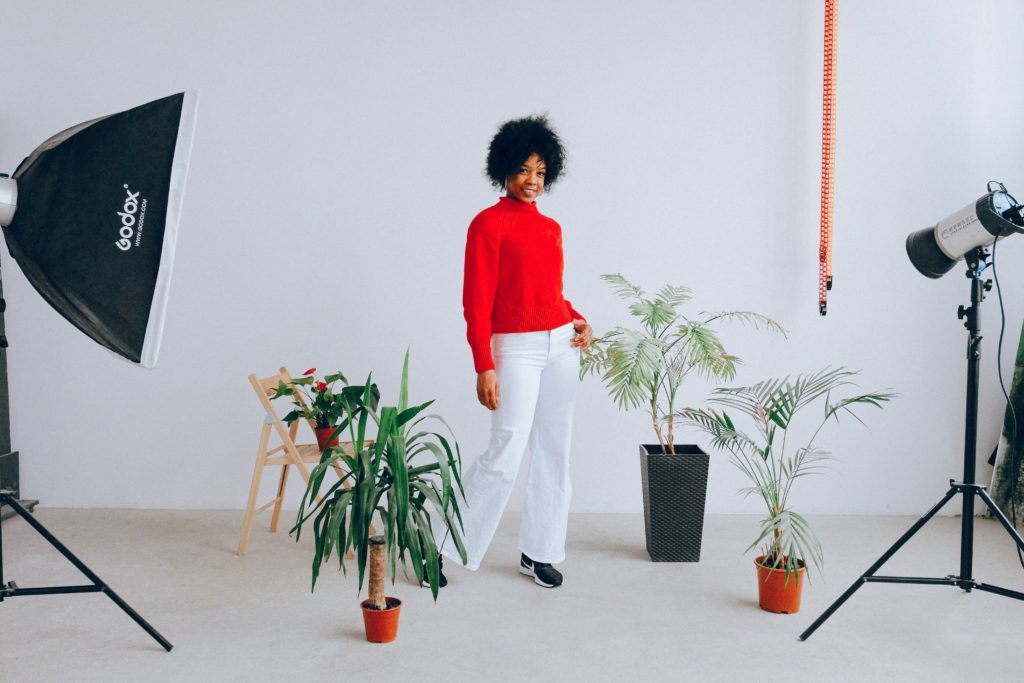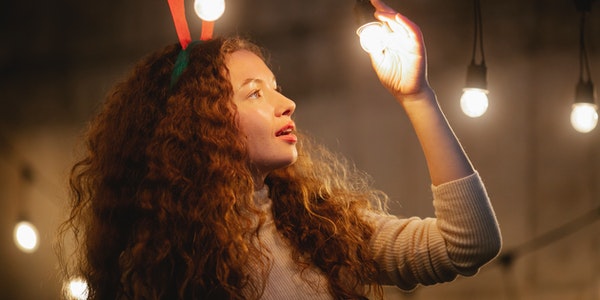Table of Contents
Principle of using light
The principle of using light for portrait wedding photography is one main light, multiple secondary lights, one projection, light ratio, light level, and light quality.
- a key light
The so-called one main light, that is, whether it is outdoor natural light or indoor lighting, it should follow the principle of one sun. A main light is good for shaping the image of a person. According to the brightness of the part irradiated by the main light, a natural and excessively diffuse auxiliary light can be used to form a character image with rich layers and strong three-dimensional impression. A key light is conducive to forming the visual center of the picture. The bright part of the subject illuminated by the main light will first attract people’s attention in the picture and become the center of interest in the picture.
If there are multiple main lights in a picture, not only will the subject be illuminated by multiple main lights, it will produce messy head shadows and light spots, destroying the performance of the perfect image of the subject, and it will also be caused by multiple main lights. The picture without the main light is chaotic.
- Sub-light
The so-called multiple side lights, that is, the portrait wedding photography screen is to achieve the main body prominent, rich layers and other artistic effects. Under the premise of a main light irradiating, using the negative and secondary light illuminating the painting part can make the light and shadow from the light-receiving surface to the dark side of the light, smooth and thick, and have a good effect of transitioning to a rich natural level. The auxiliary light of the sun can not only make the transition between light and dark naturally, but also double as the eye light, so that a small, congratulatory, bright eye light appears in the photographed person’s dark and transparent eyes, making the photographed person look radiant and piercing.
As one of the sub-lights, the background light can not only remove or weaken the main light, the shadow and the sub-light of the person being photographed, and the projection on the background. The background is relatively calm, and it can also be used in the background. Against the background of light, it enhances the sense of space and three-dimensional depth of the subject in the picture, which is more conducive to the expression of the atmosphere of the picture. For example, a gradual background light with light and dark on the bottom can set off the effect of midtones. In addition, the light and light background light can also create a light and bright high-key effect. Similarly, the contour light is also a secondary light, which outlines the outline of the figure in the same direction as the back side to show the three-dimensional space of the picture and the graceful and natural outline of the subject. As a secondary light, there are headlights that express the details and depth of the hair, and footlights that match the main light when shooting full-length images.
Note: Any auxiliary light cannot exceed the main light
- A projection
That is, in portrait photography, only the projection of the main light is allowed to illuminate the subject’s negative and secondary light, which can only play a natural transition, enrich the level, and weaken the main light projection, but cannot produce additional projections. Therefore, the positive side light and the negative side light are mostly on the left and right of the camera lens, and the subject is photographed with a smooth light position with a brightness weaker than that of the main light.
As for the background light, contour light, head light, and foot light, they generally assume that the brightness of the main light does not exceed the brightness of the main light, and each plays the role of auxiliary light in conjunction with the main light. To achieve one main light, multiple secondary lights, and one projection, a seamless picture effect must be achieved. Only when the light ratio, light position, and light quality are changed, the space between the primary and secondary front and back will sometimes be darkened.
- Changes in light ratio
The ratio of the main light to the auxiliary light is called the light ratio. The change in light ratio generally refers to the difference in the brightness of the light shining on the subject’s face, body, clothing, and background. For example, the brightness of 4 on the face of the photographed person can better display the light and dark fluctuations and the sense of level of the face.
Similarly, if the brightness of the background light illuminating the characters to illuminate the background is 1, then a three-dimensional space can be created, but a harmonious atmosphere of the picture can be created. Therefore, in portrait photography, the light ratio is not only the difference in the brightness of the main light and the secondary light of a subject’s face, but also the study of the person and the background, the face and the body, the face and the hands, the face and the hair, and the double The light ratio between each person in a group photo and a group photo.
- Light level changes
The light position change refers to the changes in the overall position of the light source such as the background of the person being photographed, the pitch, the forward, and the reverse. Except for children and girls and high-profile pictures, the main light for photographing the subject is generally closer to the front side and the lower side.
The sun light that illuminates the person being photographed generally adopts a weaker smooth light position, and the light is taken close to the left and right positions of the camera.
The background light is generally behind the subject, and the background light is illuminated from the bottom up.
The contour light is generally slightly lower than the height of the main light on the back side of the subject, and illuminates the edge contour of the subject on the downside or downside light position.
The headlight is generally on the top of the subject’s head, slightly lower than the height of the main light, and at the position of the top light from top to bottom, illuminates the subject’s hair.
The foot light generally has the same brightness as the main light, or slightly lower than the main light. Below the main light, the legs and feet of the subject are illuminated at a downward angle.

- Changes in light quality
It refers to the changes in the nature of light irradiation such as hard light, soft light, or direct light reflected light. In portrait photography, the negative and positive light that illuminates a person are mostly soft light or reflected light.
The basis for using light
The use of light must be based on the age, gender, personality, occupation and other characteristics of the person being photographed. Since the characteristics of the subjects are different, the pursuit of light in photography should also vary from person to person. Should try to avoid one-sided, one-size-fits-all light exposure.
- Appearance: such as a fat round shape, irradiated with downward light with a slightly larger light ratio to form a delicate and dignified face. The slender face can be irradiated with flat side light, with a slightly smaller light ratio to deepen the plump and even effect of the face.
- Age: If photographing infants and young children, use soft scattered light to show their innocence, liveliness, tenderness and so on. The performance of middle-aged and elderly people can be illuminated with slightly stronger or direct light to show that they are stable, sophisticated, and experienced.
- Gender: For example, girls should be irradiated with light with soft light and low light ratio to reflect the characteristics of their delicate skin. For shooting boys, it is advisable to illuminate with strong light and obvious light ratio to show their rugged, strong and strong characteristics.
- Personality: Like the introverted and quiet subjects, Yi Cai uses smooth light with natural transition and harmonious light and shadow to express their subtle and elegant personality characteristics. The shot characters with lively and cheerful personality can be illuminated with bright and dark, undulating side backlighting to reproduce their straightforward personality.
- Occupation: For the performance of doctors, teachers and other intellectuals, fresh and clear light and shadow can be used to show the professional characteristics of their white angels or human soul engineers. While shooting the images of workers, peasant soldiers and other characters, you can use bright-paced light and shadow processing to highlight their professional characteristics such as creating wealth, changing the world, or defending the country.

Only according to the individual characteristics of the subjects, and the use of light changes to perform illumination imaging from person to person, can each person be photographed vividly, vividly, and achieve an artistic effect that resembles and is beautiful to the person.
If you do not distinguish between face characteristics, personality characteristics of men and women, young and old, and occupational differences, blindly adopting a fixed pattern of light irradiation or excessively decorating and beautifying the characters with large flat lights, and the method of using light that loses the character’s own face and personality is not advisable. In the same way, regardless of whether the image of the character is appropriate, the use of singular decorative lights is often self-defeating and counterproductive.
Intensity of light
- The power of the luminous body (200 400 600 800 1000)
- Also depends on the shape of the luminous body
- Depends on the distance of the light
Understand and hold the intensity of light, you can adjust the brightness of light to form the light and dark changes of light, and produce vivid three-dimensional feeling, rich layering and delicate skin feeling.
